When I started to learn about “becoming a healthier version of myself” and learnt about exercise and diet, one of the first things I learnt was that protein plays an important role in your diet and your health.
If you’re like me and love learning about how you can do better for your health, you’ll want to keep on reading!
In this article we’ll discuss what protein is, why protein is so important to your diet and your health, and how much protein you need to stay healthy, and if you wish to put on more size in the gym.
A quick word on macronutrients
As explained by the Washington State University, macronutrients are that group of nutrients that your body needs greater volumes of. The simple explanation behind this is that macros are made up of calories that fuel your body with energy.
The calorie content of each macro is as follows:[1]https://www.shapescale.com/blog/health/nutrition/calculate-macronutrient-ratio/
- A gram of protein contains 4 calories
- And a gram of fat contains 9 calories
- A gram of carbohydrates contains 4 calories
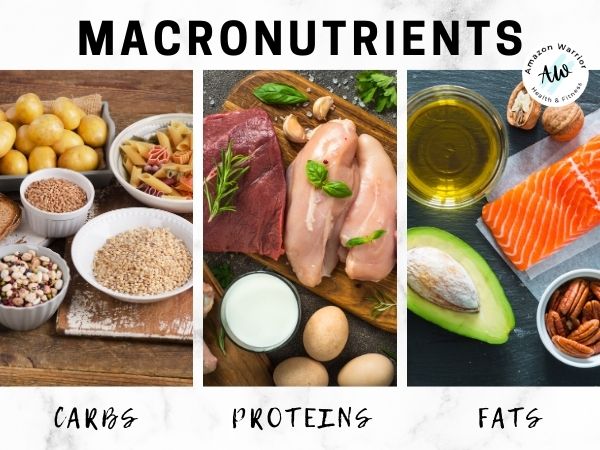
What is protein?
Protein, along with carbohydrates and fats, comprise of the three macronutrients contained within foods and beverages, which provide our body with the energy1, to complete its everyday tasks.
When we consume protein-containing foods, the protein components are broken down into smaller building blocks called amino acids, which help synthesise and regenerate important body structures such as muscle, blood and skin tissue2.
Our body uses twenty different amino acids, which nine of them are non-essential in that our body can produce naturally (histidine, isoleucine, leucine, lysine, methionine, phenylalanine, threonine, tryptophan and valine)3.
The other eleven are essential in that our body does not produce them naturally and must be consumed through the protein sources in our diet.
As our body is in a constant flux of growth and repair known as protein turnover4, it is important that every meal that we consume has a protein component to it.
Proteins play many other important roles such as 2:
- Act as enzymes which help facilitate numerous reactions in the body.
- Act as hormones (e.g. insulin) allowing our body to us carbohydrates as an energy source.
- Act as transporters such as haemoglobin which carries oxygen from the lungs to other cells.
- Acts as a third line energy source when carbohydrates and fat stores are exhausted.
- Help form antibodies (e.g. immunoglobulins) that help us fight infections.
- Other roles involve blood clotting and vision.
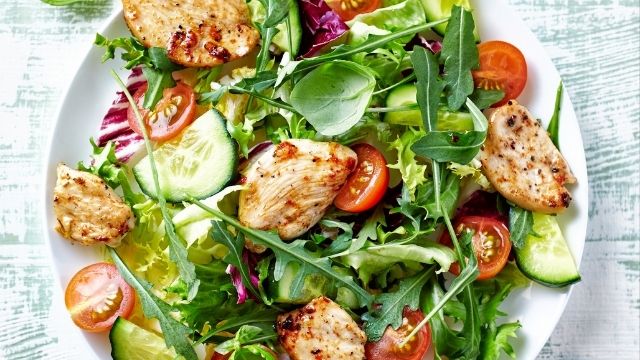
Where is protein sourced in our diet?
Protein is sourced in foods across each of the five food groups, though protein-rich foods are predominantly from the meat and dairy (animal) food groups and are great sources of many important vitamin and minerals5.
It is important to recognise that animal sources of protein are regarded as a “complete” and high biological value (HBV) sources of protein as they contain all of the essential amino acids, and are readily absorbed2, 6.
Foods from the cereals/grains, fruit and vegetable food groups, also contain a small amount of protein, which will also help support an overall pattern of eating, though in comparison, these food groups generally lack at least one of these essential amino acids3.
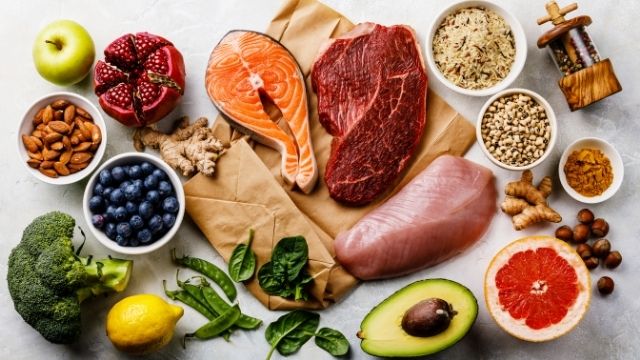
Consuming a variety of food sources is recommended, especially If following a vegetarian or vegan eating pattern.
| Meat, dairy sources | Protein (g) | Grains, fruit and vegetables | Protein (g) |
| Beef, lamb, pork, 100g (lean cooked) | 30 | Bread, 1 slice | 3 |
| Chicken, 100g (lean/cooked) | 30 | Pasta or rice (1/2 cup cooked) | 3 |
| Fish 100g (cooked) | 30 | Nutri Grain, Special K (1 cup) | 8 |
| 1 medium egg | 7 | Weet Bix (2 biscuits) | 4 |
| Ham, chicken or turkey, 25g (1 slice) | 4 | Fruit | 1 |
| Tuna/salmon, 100g (canned) | 20 | Veg | 1 |
| Tofu, 100g | 12 | Chia Seeds, 15g | 3 |
| Nuts/seeds, 30g (1/4 cup) | 8 | Quinoa (1/2 cup), 100g | 4 |
| Peanut butter, 25g (1 tbsp) | 7 | Brown rice (1/2 cup) | 3 |
| Cow’s milk, 250ml (1 cup) | 8 | Pasta, white (1/4 cup) | 3 |
| Yoghurt, 200g (1 tub) | 10 | ||
| Cottage or Ricotta Cheese, 60g (3 tbsp) | 10 | ||
| Hard Cheese, 40g (2 slices) | 10 |
Nutrition information for this table sourced from: Queensland Government – Kidney disease – getting the right amount of protein7.
For more highly detailed information, source information from the Australian Food Composition Database (NUTTAB)8.
How much protein do you need?
The amount of protein that your body requires is individual, and dependent on factors including:
- your current nutritional status and
- how much you are already consuming,
- physical activity level, pattern and timing of protein ingestion,
- along with age and gender etc.
These factors will also be influenced by your nutritional goals you are working towards, whether they be body composition (e.g reduce fat and increase muscle) or weight related (e.g. lose or gain weight) or a combination of both.
How much protein do I need for healthy weight maintenance?
The Nutrient Reference Values (NRV’s), in line with the Australian Macronutrient Distribution Range (AMDR) provide protein requirements for Australian’s to reduce the risk of chronic disease9; which can be applied for those who are sedentary, and recreational endurance athletes (weekend warriors), whom are looking to maintain their current weight and lean muscle. These values vary between gender, and throughout various age groups.
For adult men between 19-70yrs of age, the recommended daily intake (RDI) is 0.84g/kg of body weight, which increases to 1.07k/kg for those over 70 years of age8. For women, the RDI is 0.75g/kg of body weight, which increases, to 0.94g/kg of body weight for those over 70 years of age9.
This is in line with the US/Canadian dietary reference intakes, where the protein requirements for healthy individuals are 0.8-0.9g/kg/day10. This indicates a healthy individual weighing 70kg needs between 59-75grams of protein per day to maintain lean body mass.
Protein also plays a role in filling us up and can help with satiety, and therefore is useful for weight management and reducing unnecessary weight gain11.
How much protein do I need for lean muscle gain?
For those with greater protein requirements and seeking to gain lean mean muscle, the AIS recommends 1.2-2.0g/kg of body weight per day, which covers athletes across a range of different sports, each with different nutritional requirements12.
To put this into context, for a 70kg person, this would equate to 84-140g of protein per day. This needs to be supported by an energy surplus of 2000-4000kJ is required to stimulate muscle growth12.
This accounts for a 0.25-0.5kg increase in body weight per week, whilst also providing enough energy to complete the physical tasks required to achieve this12. This is in line with the US and Canadian Dietetic Association’s recommendations for endurance and strength athletes, which range between 1.2-1.7g/kg10.
How much protein do endurance athletes need?
As there is a large variation in protein requirements, sports need to be separated towards the upper and low range of these estimated values. For endurance athletes completing moderate-intensity exercise (1.2g/kg/day), and resistance athletes working in a steady state phase (1.0-1.2g/kg/day), these values are towards the lower end of recommendations12.
How much protein do I need for bodybuilding?
Towards, the middle of the spectrum, we see increased values for those involved in football, and power sports (1.4-1.7g/kg), where athletes are exercising at moderate to high intensity’s, and resistance athletes in an early training phase (1.5-1.7g/kg/day), whom need increased muscle to compete in their chosen fields12.
Consuming higher than 2.0-2.5g/kg of body weight is unnecessary for bodybuilders according to Sports Dietitians Australia13.
Practical ways to increase your protein intake
As protein is rarely a component inadequate in our diets, therefore it is worth considering first, what protein sources are you already consuming across your day/week, and are you likely to already be meeting your requirements?
If not, you may need to include an additional protein-rich meal throughout the day, whilst even considering changing the proportion of protein to the other macronutrients in your overall pattern of eating.
Some protein rich meals could for example include:
- Teriyaki Chicken Lettuce Wraps
- Protein Pancakes
- Sweet Potato Salmon Patties
An effective strategy is to incorporate a protein source of food at every meal, and distribute your intake evenly throughout the day.
The Australian Macronutrient Dietary Requirements recommend that 15-25% of your total energy intake comes from protein sources14.
For one of your main meals, on a plate this looks like ¼ protein, ¼ carbohydrates and ½ low starch vegetables15.
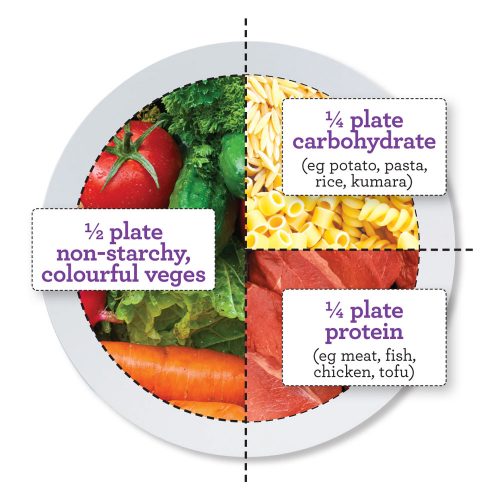
Practical tips to ensure you meet your protein requirements
- Aim to consume three main meals (20-35g protein per meal) per day, with nutritious snacks/drinks (10-15g protein per snack) in between meals. If you cannot manage usual sized meals, try 6-8 smaller sized meals/snacks.
- Prioritise the protein (meat, fish or dairy) source first.
- Fortify your foods, by adding in cheese, milk, yoghurt to meals like omelettes, frittatas, pasta dishes, soups, casseroles, cereals.
- Avoid large volumes of fluid before/during meals, so they do not fill you up.
- Water is crucial for hydration, but depending on your circumstances, consider substituting in some fluids with a higher protein content such as milk, a high protein drink or protein bar. Ensure to consume these in between meals, so they do not replace your normal meals.
Protein Supplementation
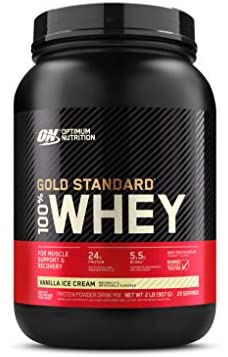
A scoop (approx. 25-30g) of a protein supplement, such as
- Whey protein isolate (WPI) (such as Optimum Nutrition 100% Whey pictured above) or
- Whey protein concentrate (WPC) which can be consumed in a shake, sprinkled over a breakfast cereal, or added to your yoghurt.
- These may be more palatable, and appealing to the person, especially after a gym or high intensity training session.
- If choosing to use supplements, it is advised they are utilised to support a food first approach, rather than as a food replacement.
- If competing in a professional field, it is strongly recommended to use supplements containing the HASTA or Informed Choice/Informed Sport logo. These logos represent that they have been independently batch tested and are less likely to have been contaminated by illicit performance enhancing substances under the ASADA and WADA anti-doping codes.
- If uncertain about whether your supplement is considered safe, ASADA has developed the ASADA Clean Sport app, which can be downloaded across iPhone and Android devices.
MEAL PREP
If preparing multiple meals for the week, it is recommended that you start with your protein source and support it with a carbohydrate source such as long-grain brown rice or pasta, and a mix of starchy and non-starch vegetables.
Surefire Strategies for Dining Out
- Go to restaurants that use organic or natural meats and vegetables whenever possible.
- If you’re at a restaurant not listed above, order a salad with plain grilled chicken or steak OR for other protein options choose one of the following: grilled white fish, shrimp, or lobster.
- Become familiar with portion sizes to be able to eyeball & judge the serving sizes of your
proteins. - For seasonings while eating out, ask for dressings etc on the side. Use little salt & pepper or bring your own to be safe.
- Carry stevia packets for tea or coffee.
- Don’t Be Shy About Special Requests – Ask for proteins to be grilled plain instead of fried (NO butter, oil, or seasonings).

The Bottom Line
Who should you seek advice from, to support you with your protein intake safely?
- A doctor/GP – to ensure that you are consuming an amount of protein that is considered safe in regards to any pre-existing medical conditions if you have any.
- An exercise physiologist/physiotherapist/personal trainer – to design an exercise program that stimulates muscular growth through increase of muscle size and number.
- A dietitian – trained with the knowledge of what foods contain protein and are able to apply practical nutrition strategies to ensure you consume adequate amounts throughout the day.
Disclaimer: It is strongly advised that protein and energy requirements provided in this article are only applied under the guidance of an accredited practising dietitian and general practitioner, especially if you have any pre-existing medical conditions.
REFERENCES
- Carreiro A, Dhillon J, Gordon S, Jacobs A, Higgins K, McArthur B, Redan B, Rivera R, Schmidt L, Mattes R. The macronutrients, appetite and energy intake. The macronutrients, appetite and energy intake. Annu Rev Nutr. 36: 73-103. [cited 2020 September 20]. https://www.ncbi.nlm.nih.gov/pmc/articles/PMC4960974/
- Genetics Home Reference. What are proteins and what do they do? GHR. [cited 2020 September 20]. Available from: https://ghr.nlm.nih.gov/primer/howgeneswork/protein
- Hoffman J & Falvo M. Protein – which is best? J Sports Sci Med. 2004 Sep; 3(3):118-130. [cited 2020 September 25]. Available from: https://www.ncbi.nlm.nih.gov/pmc/articles/PMC3905294/
- Dietitians Australia [Internet]. All about protein. Dietitians Australia. [cited 2020 September 20]. Available from: https://dietitiansaustralia.org.au/smart-eating-for-you/smart-eating-fast-facts/nourishing-nutrients/all-about-protein-in-your-diet/
- Eat for Health [Internet]. Lean meat and poultry, fish, eggs, tofu, nuts and seeds and legumes/beans. [cited 2020 September 20]. Available from: https://www.eatforhealth.gov.au/food-essentials/five-food-groups/lean-meat-and-poultry-fish-eggs-tofu-nuts-and-seeds-andhttps://www.abc.net.au/news/health/2019-08-08/burning-question-protein-how-much-do-i-need-muscle-aging/11390460
- Berue S. Vegan protein powder supplements of high biological value. Journal of Renal Nutrition (2012). Vol. 22, no. 4, pp.e39-e41. [cited 2020 September 26]. Doi: doi:10.1053/j.jrn.2012.03.005
- Queensland Government [Internet]. Kidney disease – getting the right amount of protein. [cited 2020 September 20]. Available from: https://www.health.qld.gov.au/__data/assets/pdf_file/0020/148421/renal_protein.pdf
- FSANZ [Internet[. Australian Food Composition Database – Release 1.0. [cited 2020 September 20]. Available from: https://www.foodstandards.gov.au/science/monitoringnutrients/afcd/Pages/foodsearch.aspx
- NHMRC [Internet]. Protein. [cited 2020 September 20]. Available from: https://www.nrv.gov.au/nutrients/protein
- Phillips S. Dietary Protein Requirements and adaptive strategies in athletes. British Journal of Nutrition (2012), 108, S158-S167. [cited 2020 September 25]. doi:10.1017/S0007114512002516
- Westertep-Platenga M, Nieuwenhuizen D, Tome D, Westerterp K. Dietary Protein, Weight Loss, and Weight Maintenance. Annual Review of Nutrition (2009). Vol. 29, 21-41. Doi: 10.1146/annurev-nutr-080508-141056
- Australian Institute of Sport [Internet]. [cited 2020 September 20]. Available from: http://www.ausport.gov.au
- Sports Dietitians Australia [Internet]. Bodybuilding. [cited 2020 September 20]. Available from: https://www.sportsdietitians.com.au/factsheets/food-for-your-sport/bodybuilding/#:~:text=Aiming%20for%2020%2D30%20g,kilogram%20body%20weight%20is%20unnecessary.
- Grech A, Rangan A, Allman-Farinelli M 2018. Macronutrient Composition of the Australian Population’s Diets; Trends from Three Naional Nutriiton Surveys 1983, 1995 and 2020. Nutrients; 10(8):1045. [cited 2020 September 2020]. Available from: 10.3390/nu10081045
- Nestle [Internet]. Nestle Portion Plates. [cited 2020 September 20]. Available from: https://www.nestle.com.au/en/nhw/nestle-portion-plates
References
| ↑1 | https://www.shapescale.com/blog/health/nutrition/calculate-macronutrient-ratio/ |
|---|
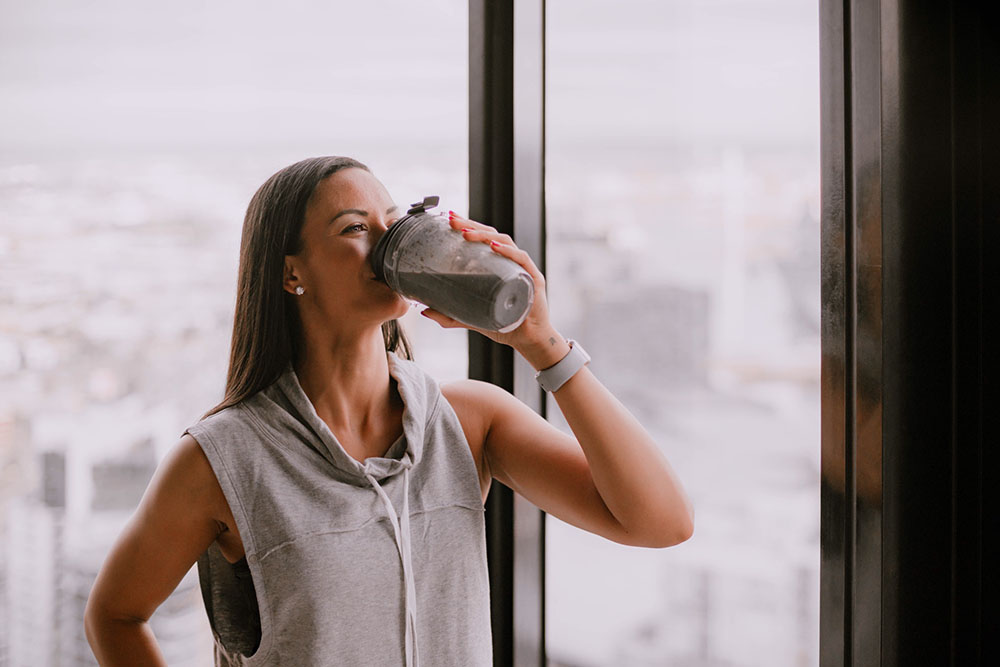
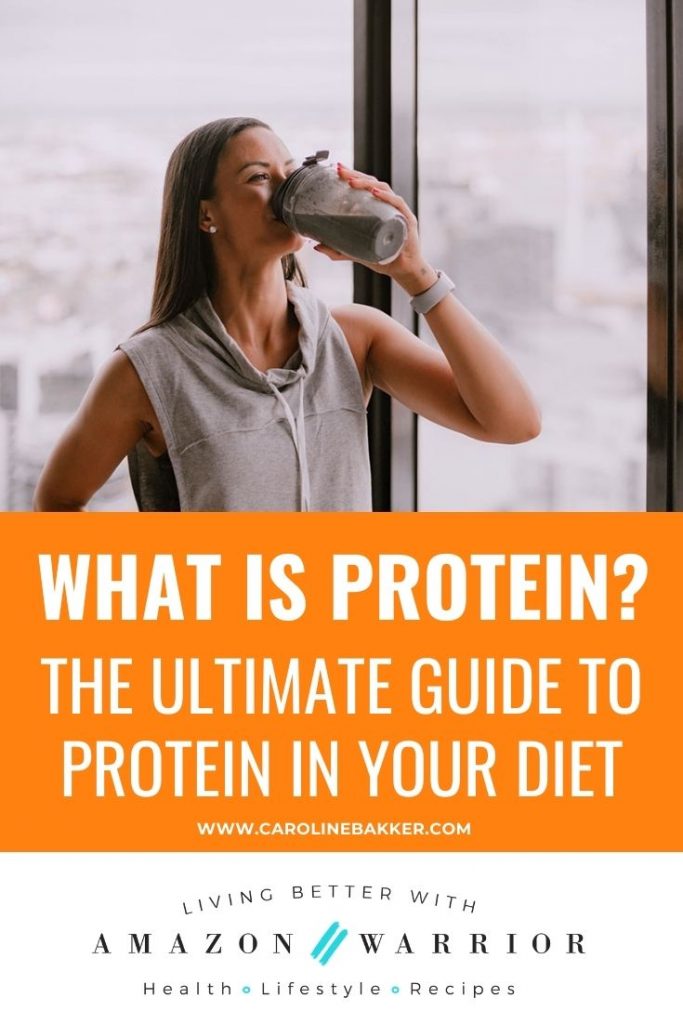
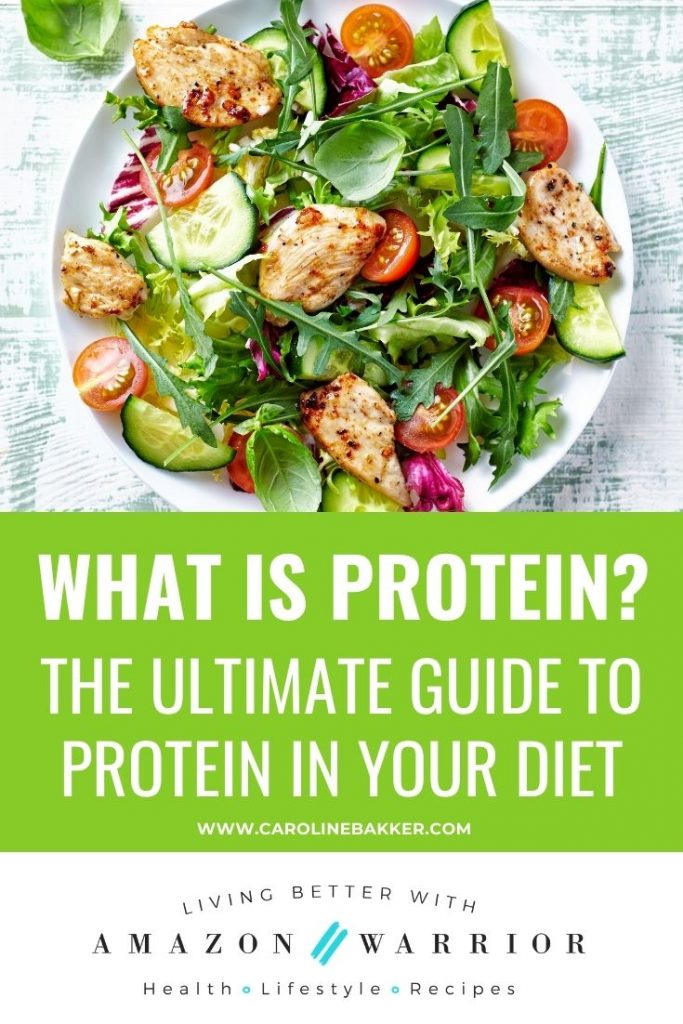

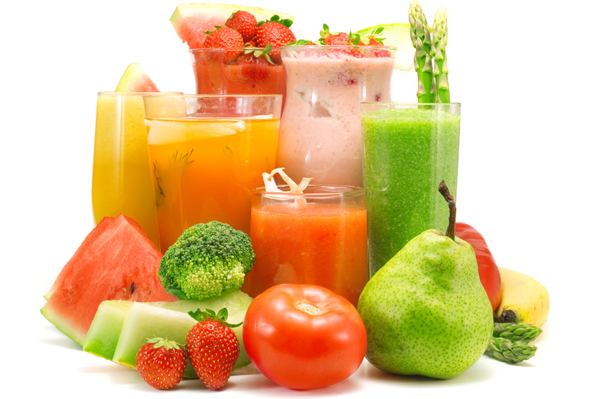
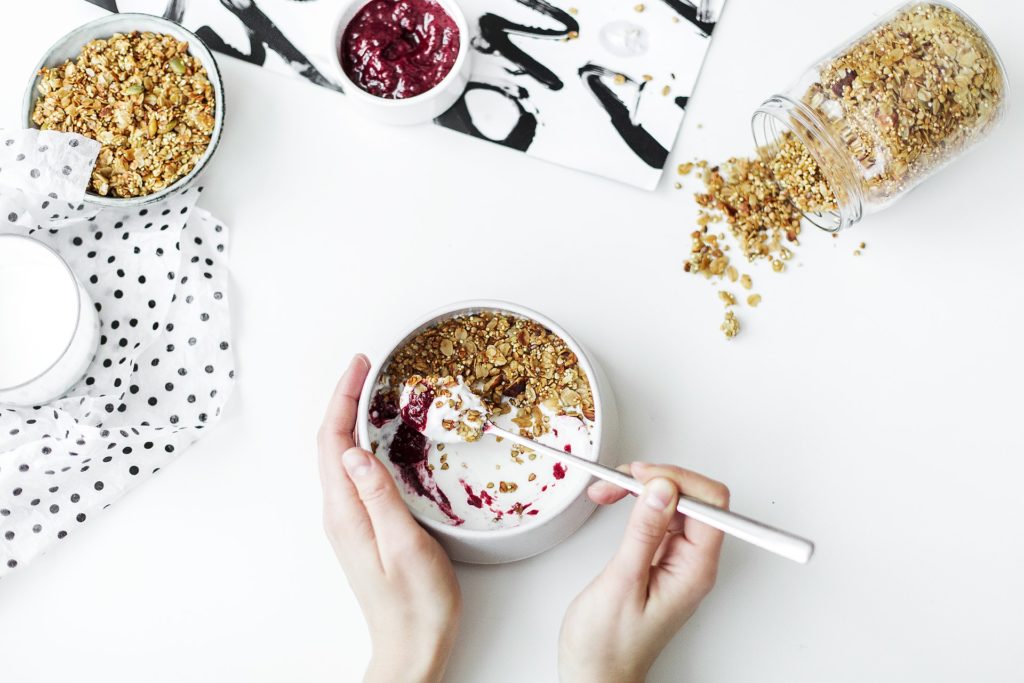
You must be logged in to post a comment.